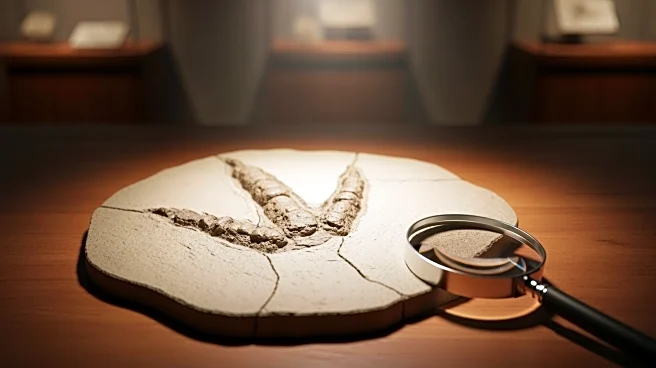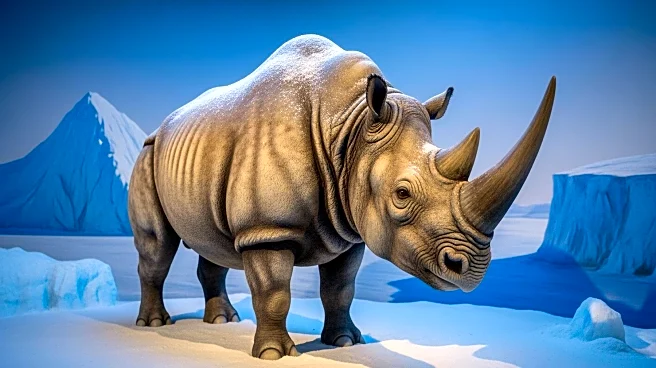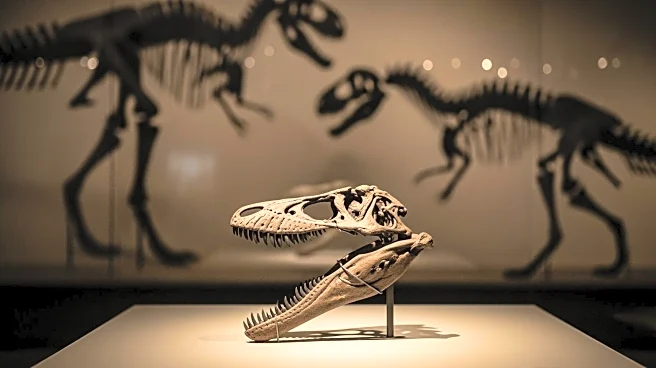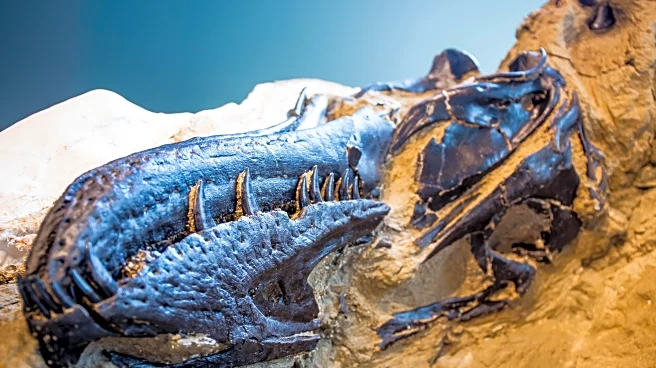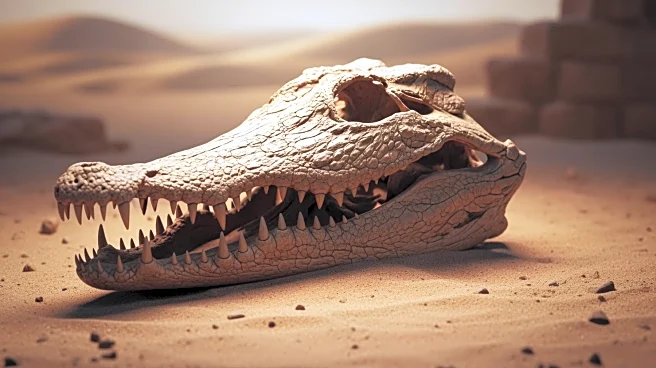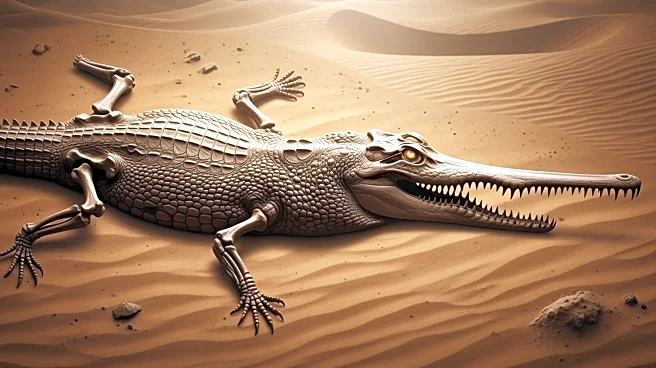What's Happening?
A fossil braincase and partial skull roof from the Carnegie Museum of Natural History has been reassessed, leading to the identification of a new genus and species of dicraeosaurid sauropod dinosaur named Athenar bermani. This dinosaur lived in what is now
Utah during the Late Jurassic period, approximately 151 to 150 million years ago. The specimen, designated as CM 26552, was originally collected in 1913 from the Morrison Formation at Dinosaur National Monument. Previously, it was classified under the genus Diplodocus. However, recent analysis has shown that its features align more closely with the Dicraeosauridae group, prompting paleontologists to reclassify it. The study, published in the journal Palaeontologia Electronica, highlights the specimen's unique traits that differentiate it from other North American dicraeosaurid species.
Why It's Important?
The reclassification of CM 26552 as Athenar bermani enhances the understanding of sauropod diversity in the Morrison Formation and North America. This discovery underscores the importance of continuous reassessment of fossil records, which can lead to significant advancements in paleontology. By identifying a new species, researchers can gain insights into the evolutionary relationships and diversity of sauropods, contributing to a more comprehensive understanding of prehistoric life. This finding also highlights the dynamic nature of scientific research, where new discoveries can reshape existing knowledge and prompt further investigation into the fossil record.
What's Next?
The identification of Athenar bermani may lead to further studies on the diversity and distribution of dicraeosaurid sauropods in North America. Researchers might explore additional specimens from the Morrison Formation to uncover more about the evolutionary history and ecological roles of these dinosaurs. This discovery could also prompt paleontologists to re-evaluate other specimens previously classified under different genera, potentially leading to more reclassifications and new species identifications. The ongoing research in this field may continue to refine the understanding of sauropod diversity and their evolutionary significance.
Beyond the Headlines
The reclassification of dinosaur specimens like CM 26552 highlights the ethical and scientific responsibility of museums and researchers to continually reassess and update their collections. This process ensures that scientific knowledge remains accurate and reflective of the latest discoveries. It also emphasizes the importance of preserving and studying historical specimens, which can yield new insights decades after their initial discovery. The findings contribute to the broader cultural and educational mission of museums, enhancing public understanding of natural history and the evolutionary processes that shaped life on Earth.
